Erik Geschke
All images by and courtesy the artist.
I find inspiration in the many ways the head is portrayed, both historically and in popular culture. Their depictions are ubiquitous, frequently disembodied, in selfies on social media, emblazoned on money or postage stamps, as proverbial talking heads on TV, in a mugshot for a wanted fugitive from the law, or in some cases, as a taxidermy trophy head mounted on a wall. In art history, we see them in portraiture, a tradition and genre of its own. In ancient Rome, each ruling dynasty aimed to highlight certain aspects of their representation in portrait sculptures. This was done in an effort to legitimize and assert their authority or align themselves with renowned predecessors.[1]
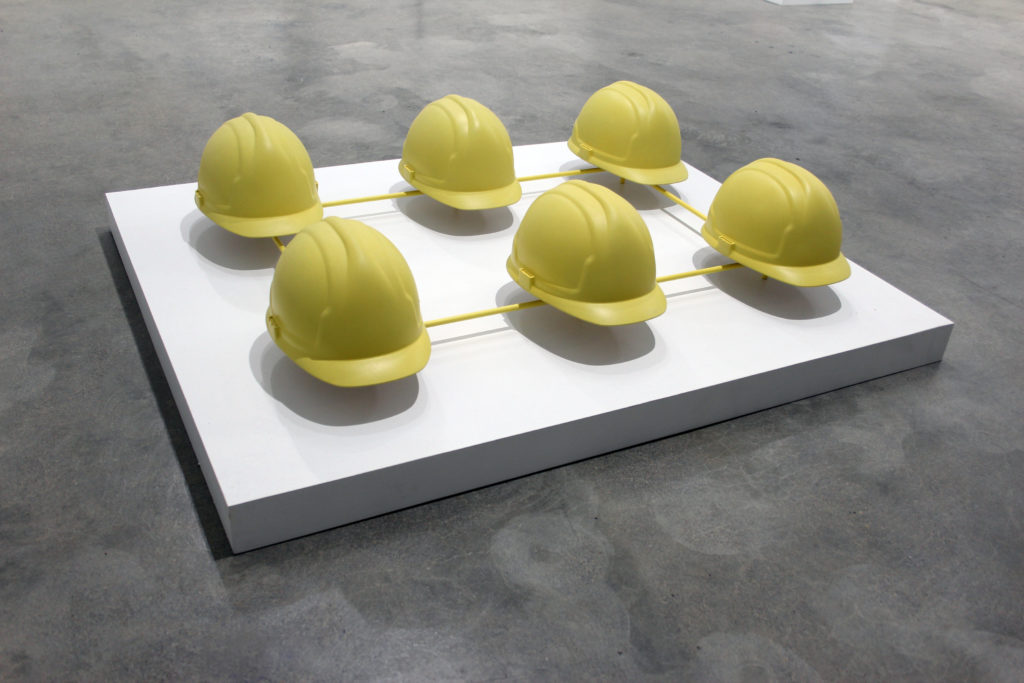
Phalanx (Six Pack), 2019, Polymerized gypsum, fiberglass, steel, wood, hardware, and acrylic. 12″ x 60″ x 48″

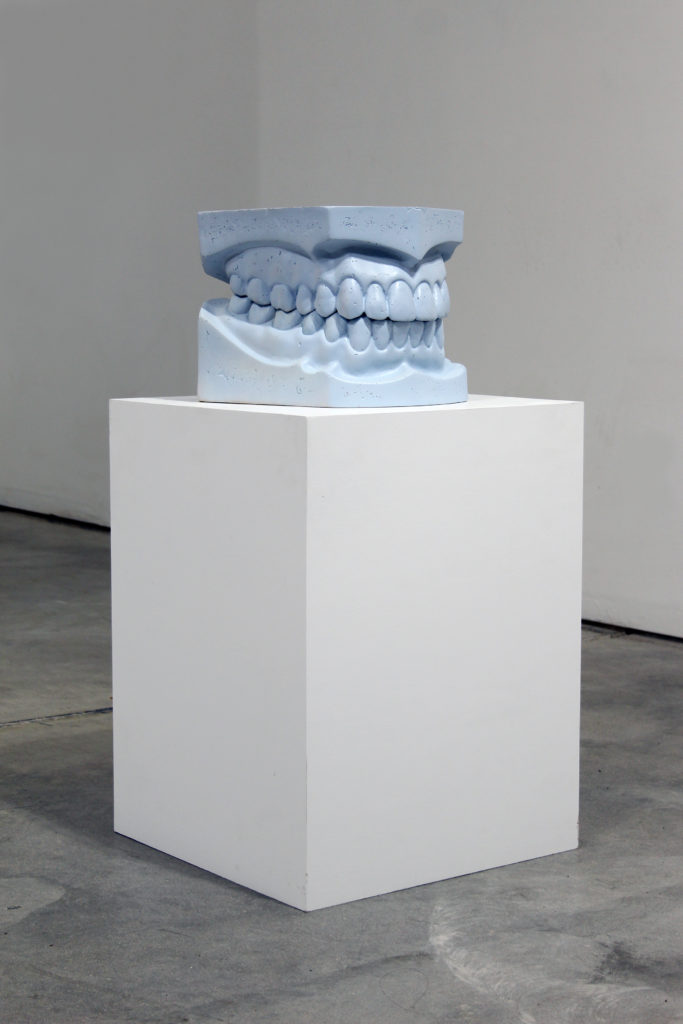
(Left) Phalanx (Six Pack), 2019, Polymerized gypsum, fiberglass, steel, wood, hardware, and acrylic. 12″ x 60″ x 48″ (Right) Pedigree, 2019, Polymerized Gypsum, fiberglass, wood, steel, hardware, epoxy, and acrylic. 40″ x 24″ x 24″
When incorporating the figure, I often depict it in parts and not the whole. I isolate the parts in order to call attention to their inherent physical properties and amplify their symbolism. A part that I often depict is the head. The head is the center of our experience of the physical world, where the primary senses are located. It is also commonly seen as the center of our inner world, where consciousness and cognition occur. The head is also our primary vehicle for expression, communication, and presented identity; the filter to the outside world.

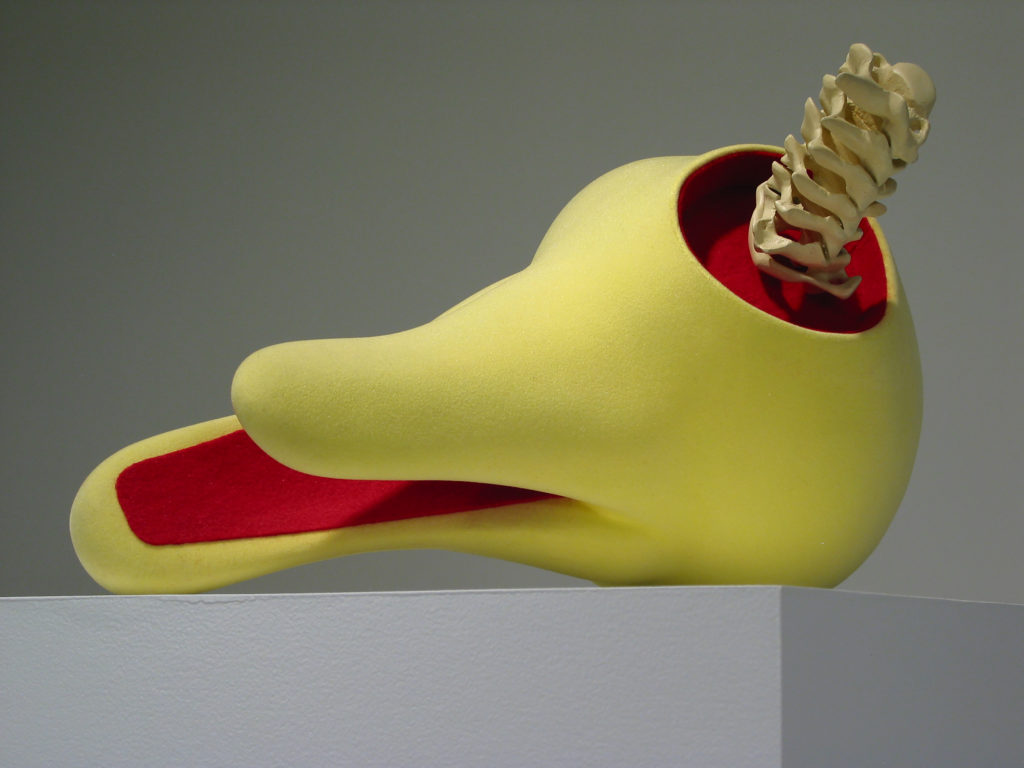
(Left) Surrogate, 2015, Polymerized gypsum, fiberglass, Styrofoam, epoxy, and acrylic. 5″ x 10″ x 8.5″ (Detail) Vanitas, 2011, Polyester resin, fiberglass, polyurethane, wood, steel, flock, felt, feathers, vinyl, and acrylic. 50″ x 84″ x 44″

Vanitas, 2011, Polyester resin, fiberglass, polyurethane, wood, steel, flock, felt, feathers, vinyl, and acrylic. 50″ x 84″ x 44″
Similarly, the head also has its own individual parts that can be extracted and have their own unique physical properties and symbolism. Some of the examples I draw upon: the Eye of Providence on the back of a U.S. dollar bill; the large plastic nose affixed to a pair of “Groucho Glasses”; the pair of glistening red, disembodied lips featured in The Rocky Horror Picture Show; and the mysterious severed human ear found in a field by the protagonist of David Lynch’s film, Blue Velvet.
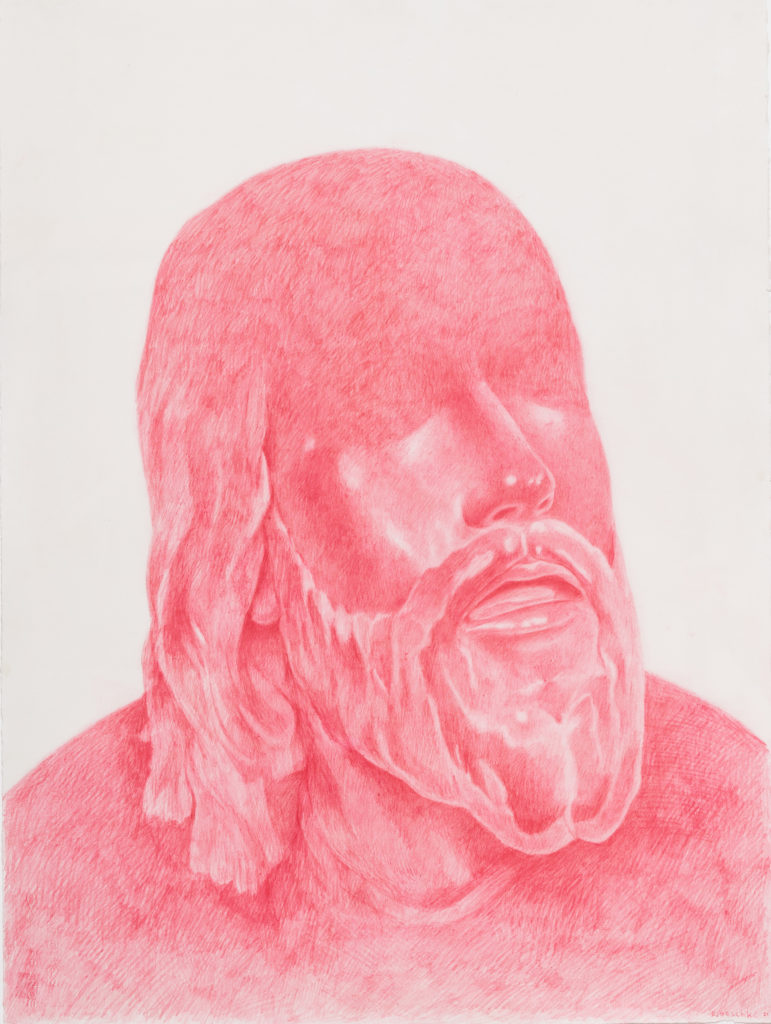
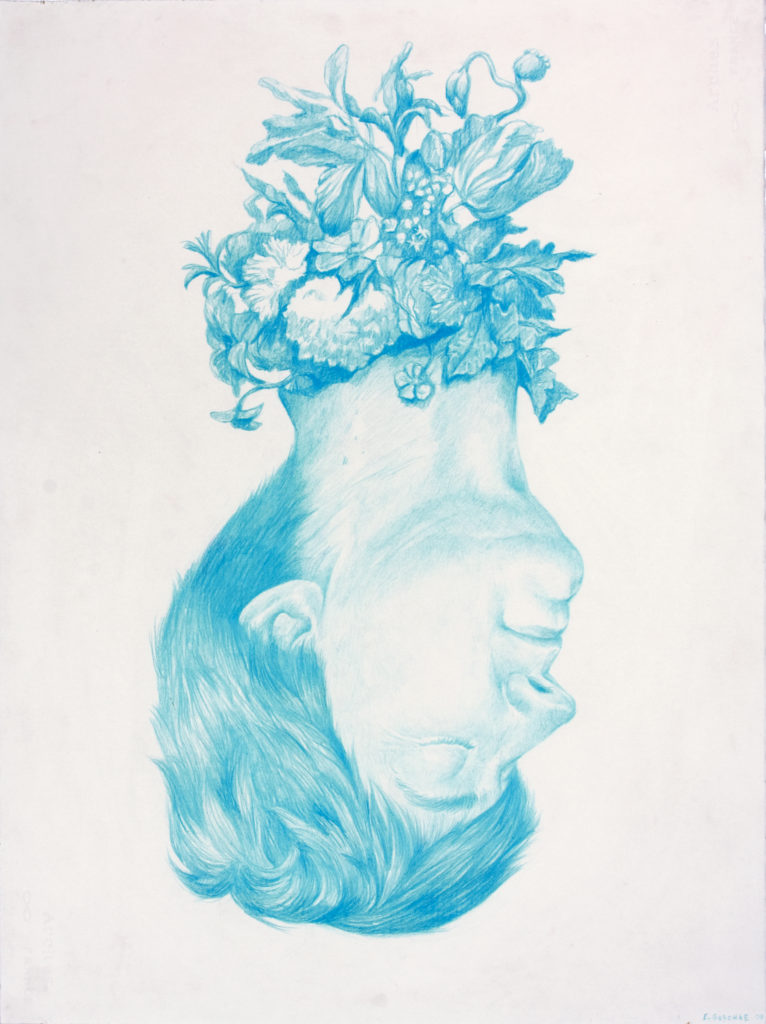
(Left) Oracle, 2021, Colored pencil on paper. 30.5″ x 22.5″ (Right) Container, 2009, Colored pencil on paper. 30.5″ x 22.5″
I believe some of the most compelling depictions of the head have been in artworks where it is obscured, absent, or merely implied. The following are two artworks that made an impact on me as a young artist and my understanding of how the figure can be depicted. In Rene Magritte’s The Lovers (Les Amants), a painting from 1928, two lovers in an intimate embrace attempt to kiss with fully cloaked heads. Similarly, Felix Gonzales-Torres’ Untitled (billboard of an empty bed), a photographic billboard from 1991, shows an empty, unmade bed with two pillows side by side. In each pillow there is an indentation, implying that it was made by the head of an individual who is no longer present. Both pieces convey a simultaneous sense of loneliness and intimacy that would not be nearly as powerful had the heads of the figures been shown.
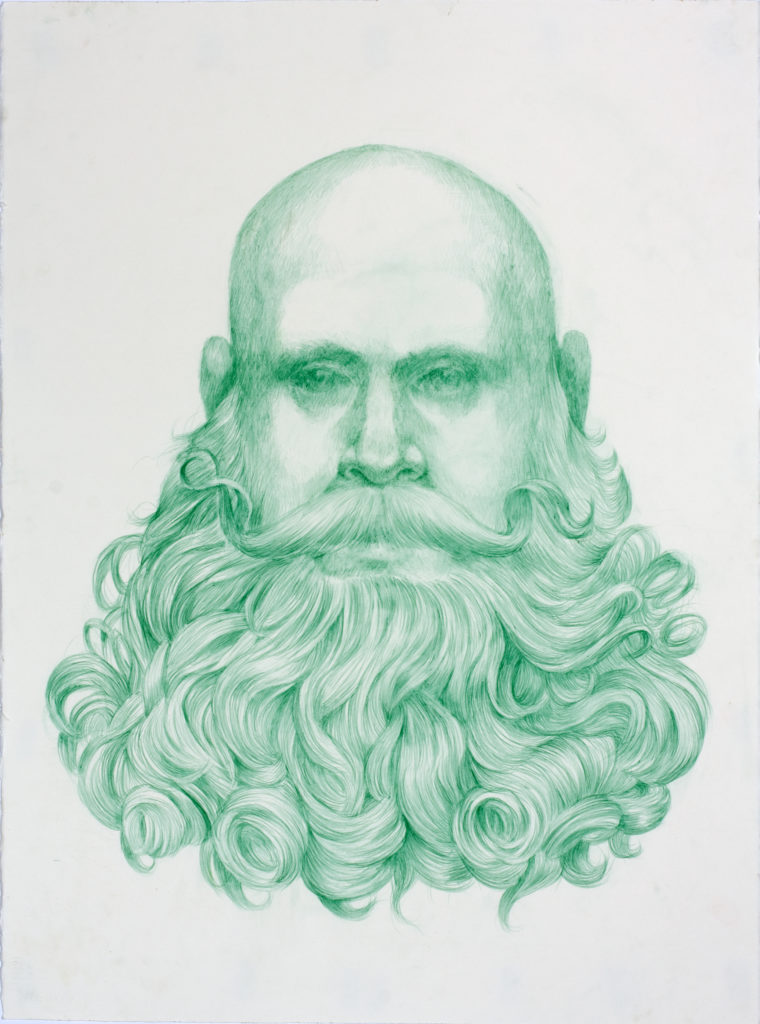
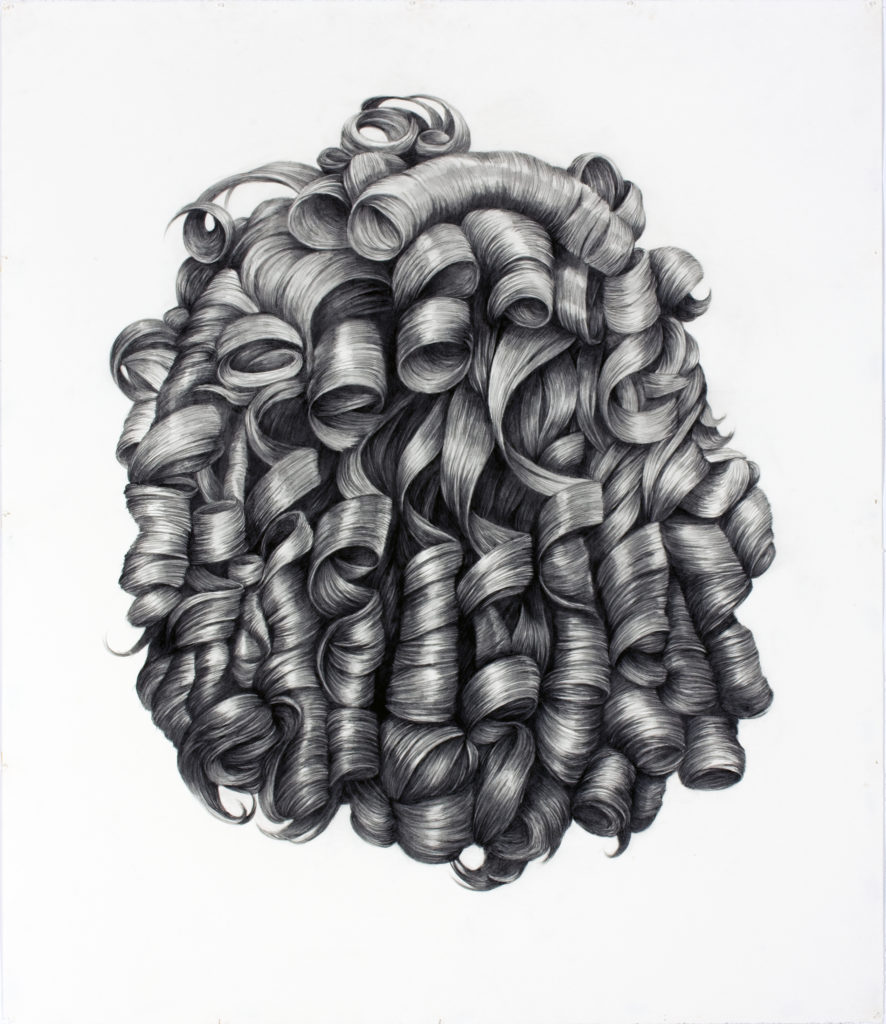
(Left) Scarcity and Abundance, 2009, Colored pencil on paper. 30.5″ x 22.5″ (Right) Heirloom, 2005, Graphite on paper. 51″ x 42″
[1] Trentinella, Rosemarie. (2003, October) Roman Portrait Sculpture: The Stylistic Cycle, https://www.metmuseum.org/toah/hd/ropo2/hd_ropo2.htm
Erik Geschke is a mixed-media artist who has exhibited both nationally and internationally. Venues include the UCLA Hammer Museum in Los Angeles, CA; ZieherSmith Gallery in New York, NY; FIAC Contemporary Art Fair in Paris, France; The Aldrich Contemporary Art Museum in Aldrich, CT; Seattle Art Museum’s SAM Gallery in Seattle, WA; Contemporary Jewish Museum in San Francisco, CA; Museum of Fine Arts, Florida State University in Tallahassee, FL; Jones Center for Contemporary Art in Austin, TX; Bellevue Arts Museum in Bellevue, WA.
He has received honors and awards from the Seattle Art Museum; Djerassi Resident Artist Program; Ford Family Foundation; Seattle Arts Commission; Oregon Arts Commission; Regional Arts and Culture Council; Jerome Foundation; College Art Association; Skowhegan School of Painting and Sculpture and the Sculpture Space Inc., among others.
Geschke received his M.F.A. from the Maryland Institute College of Art’s Rinehart School of Sculpture, attended the Skowhegan School of Painting and Sculpture, and received a B.F.A. from Cornish College of the Arts. He is a Professor of Art and coordinator of the sculpture area at Portland State University in Portland, OR.